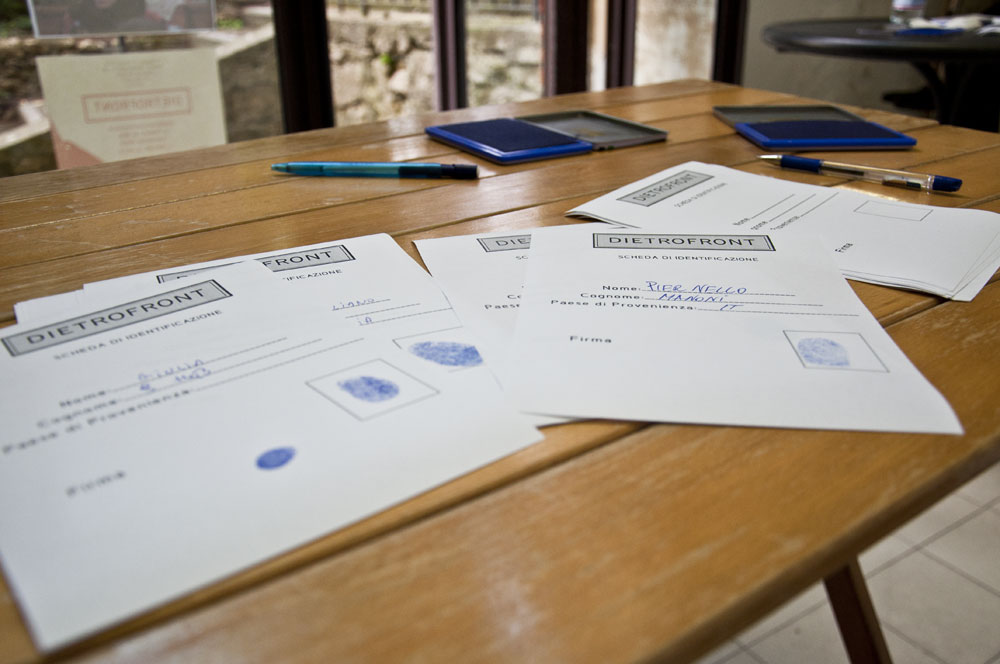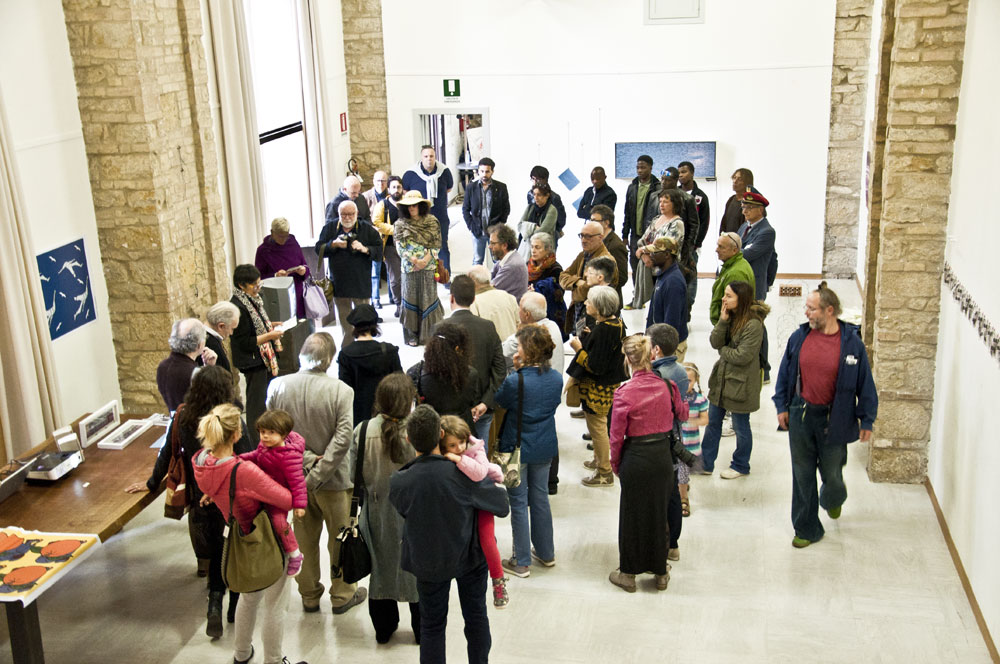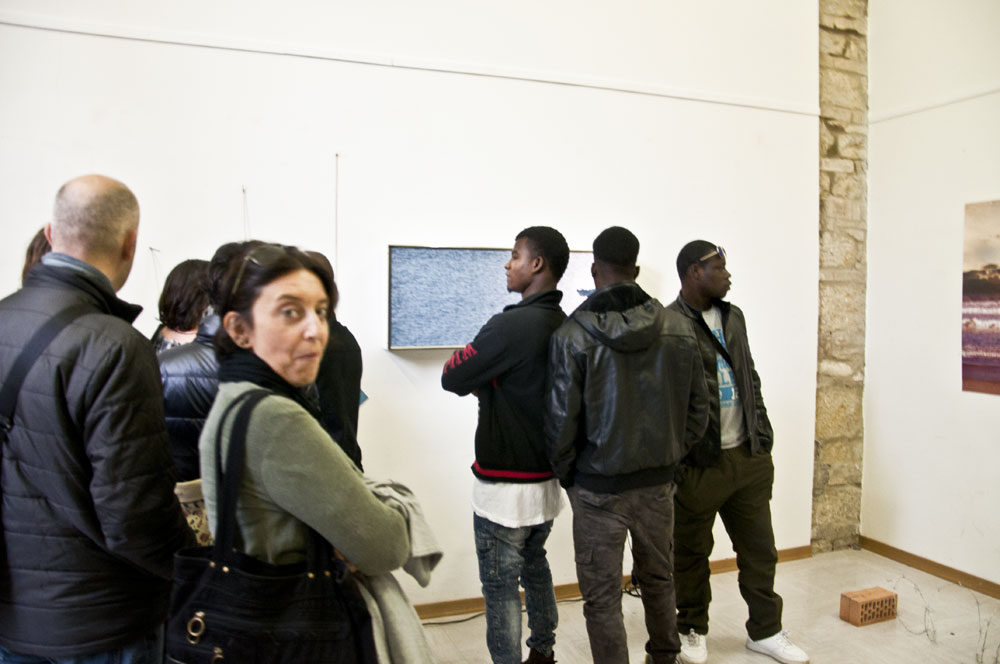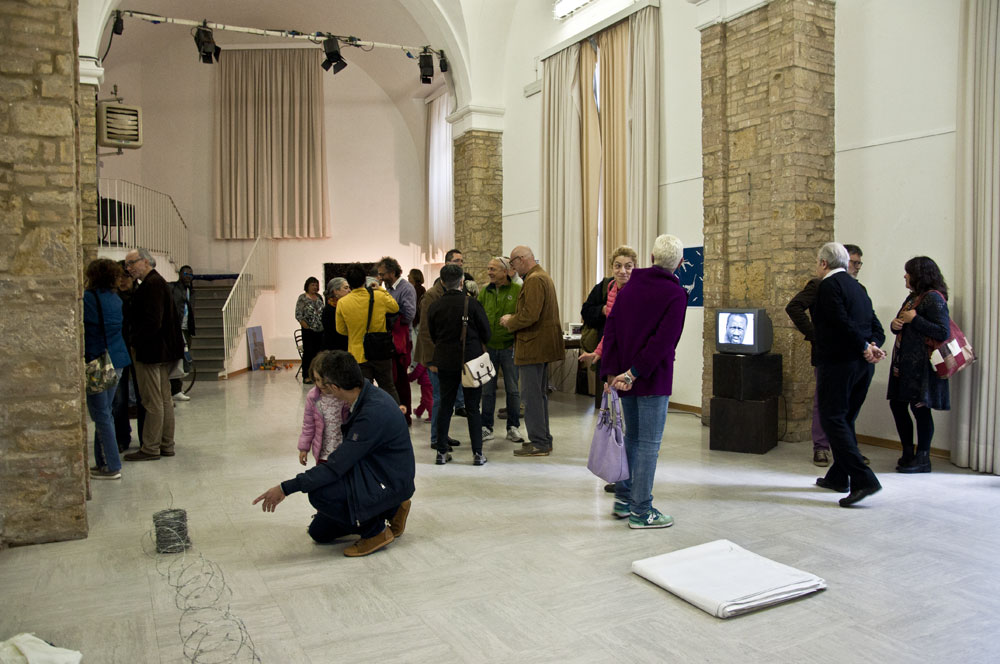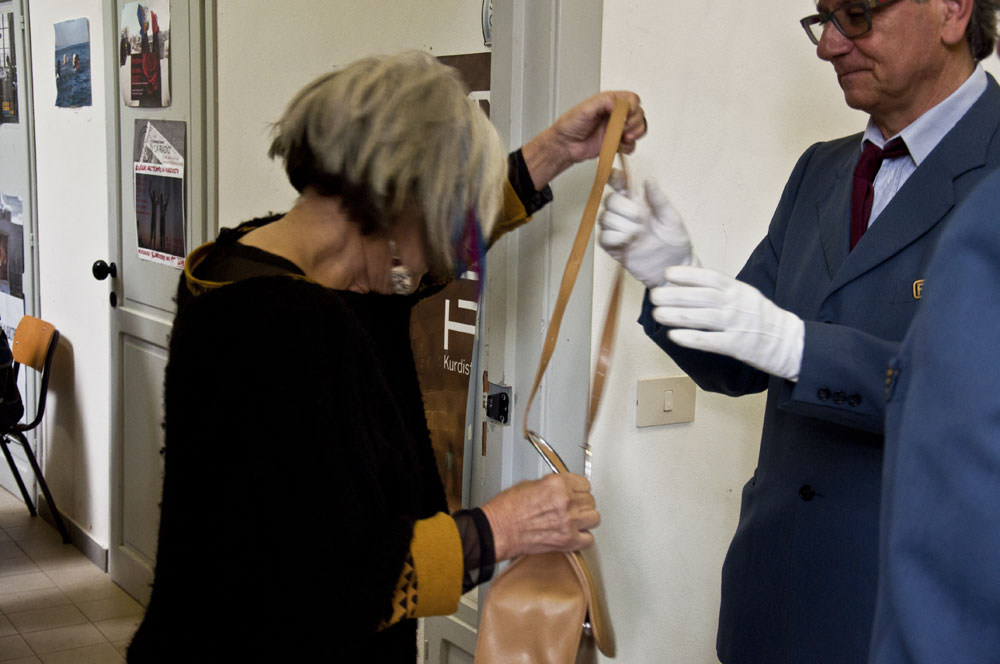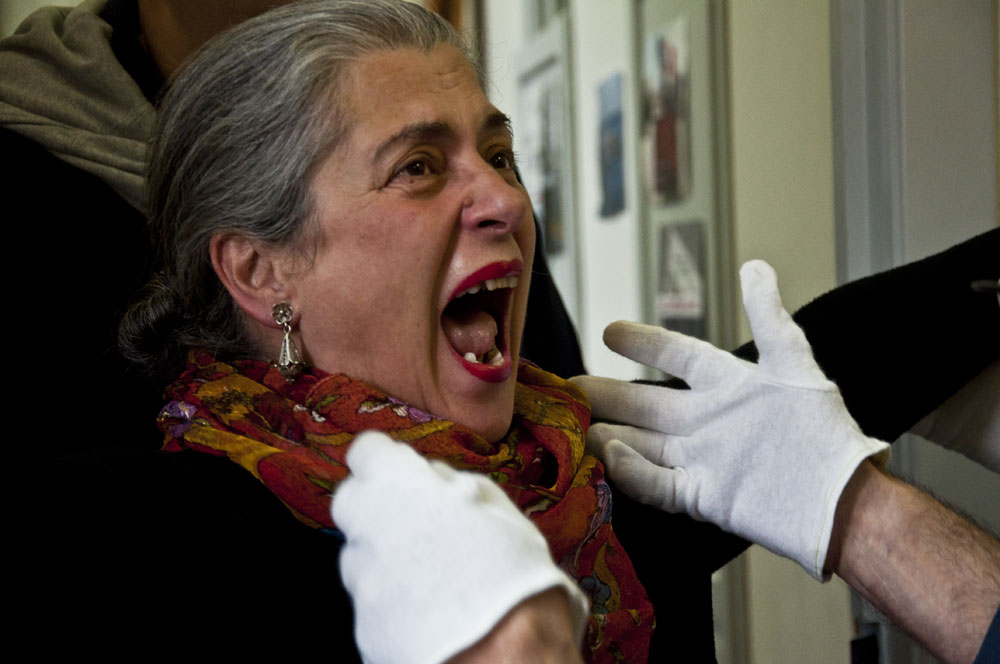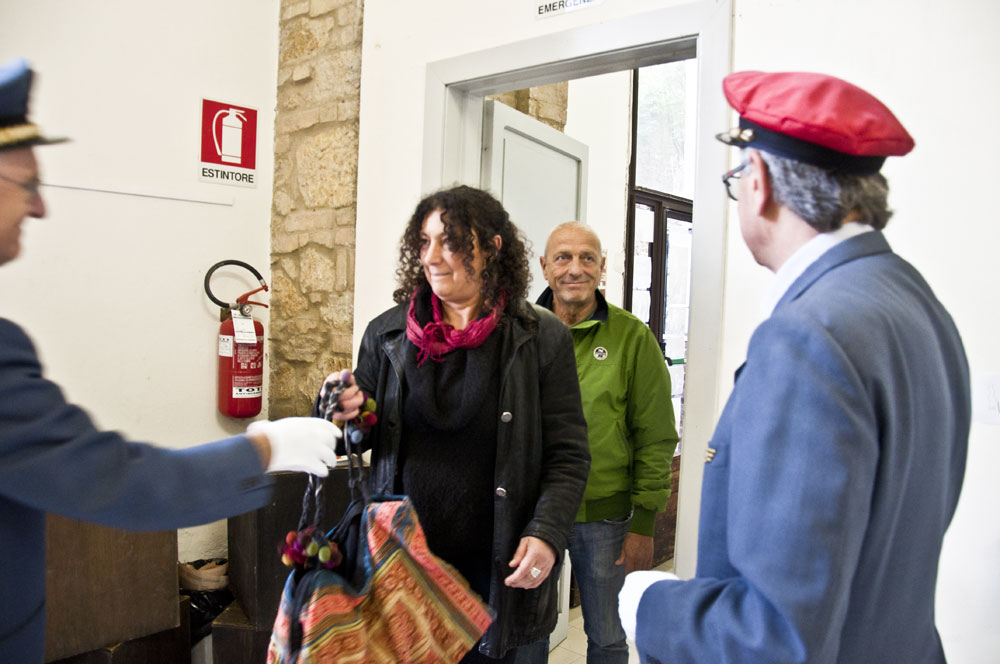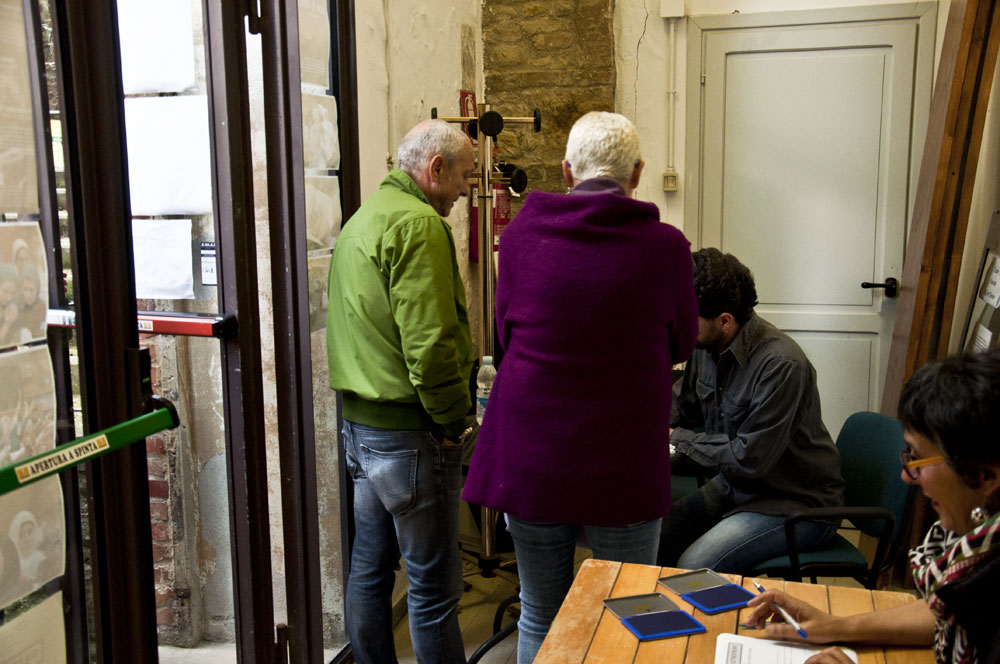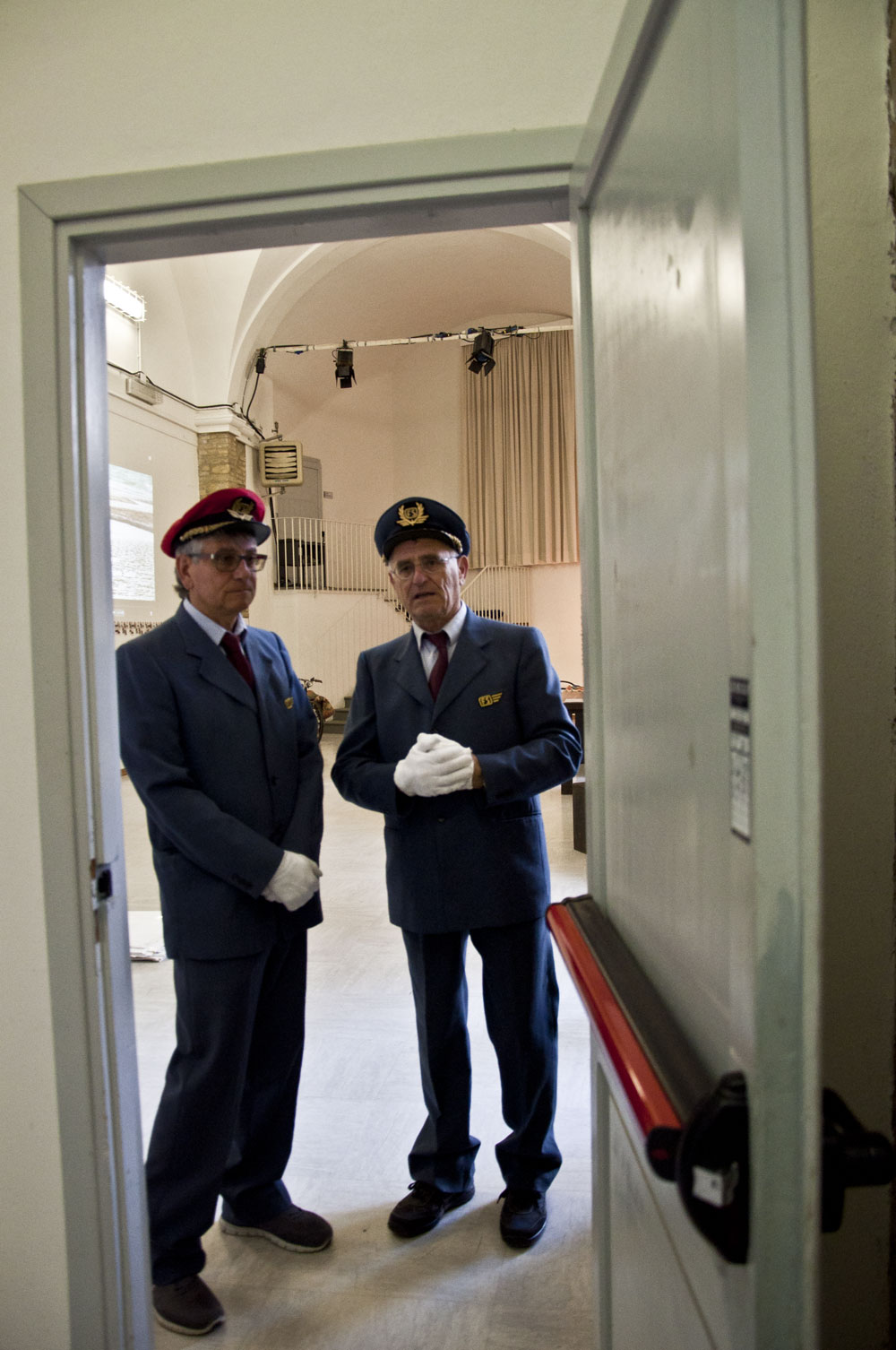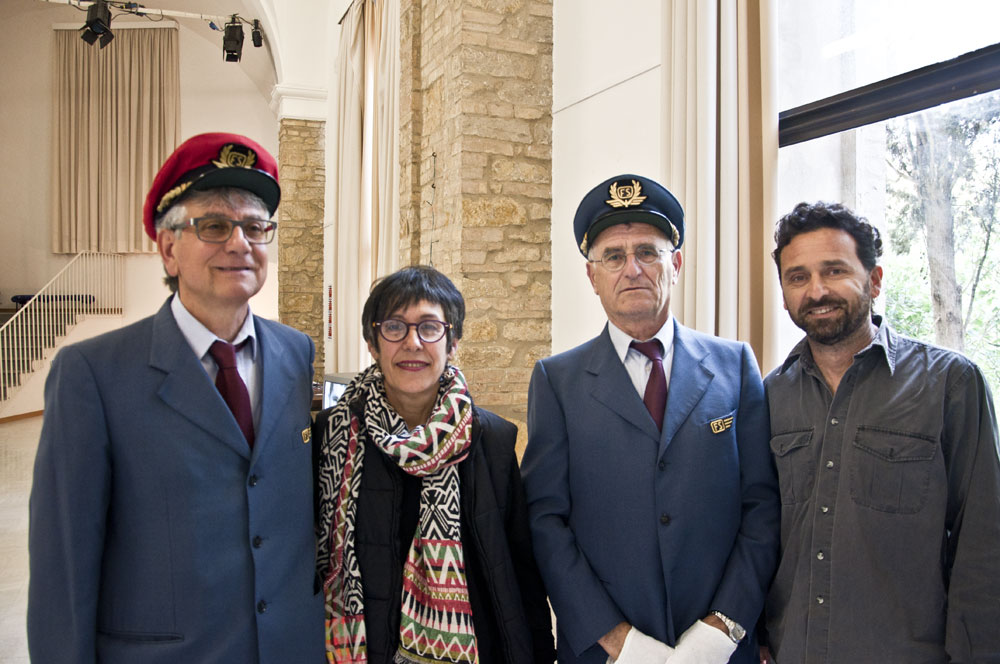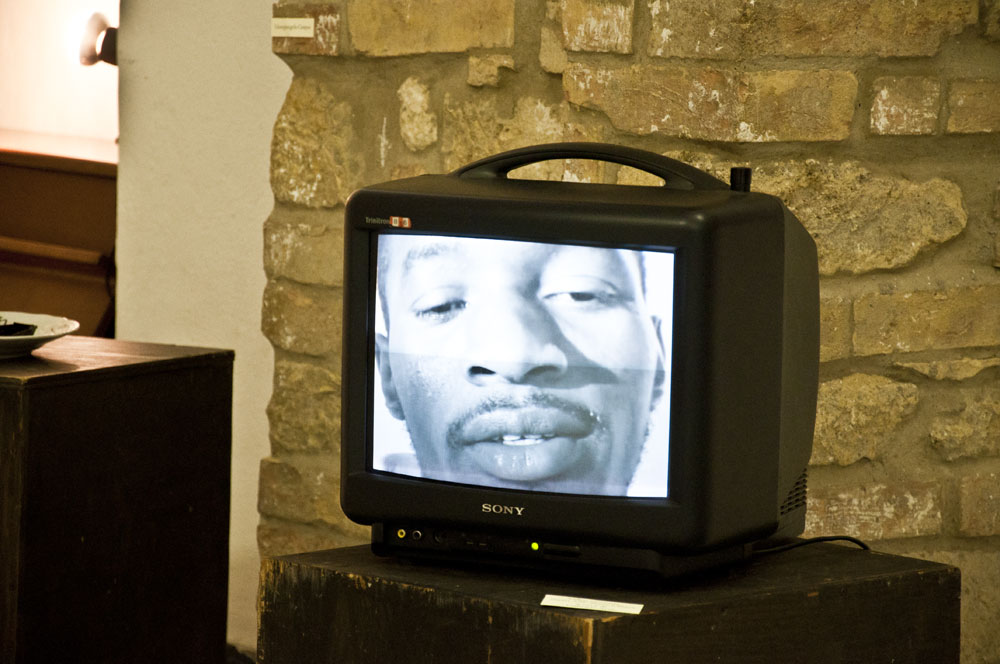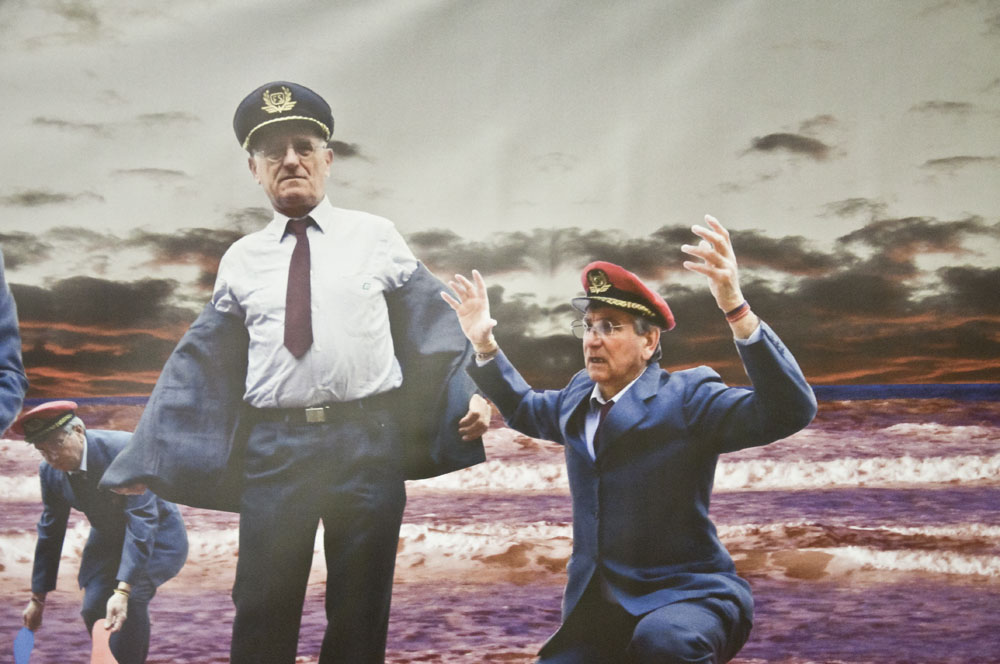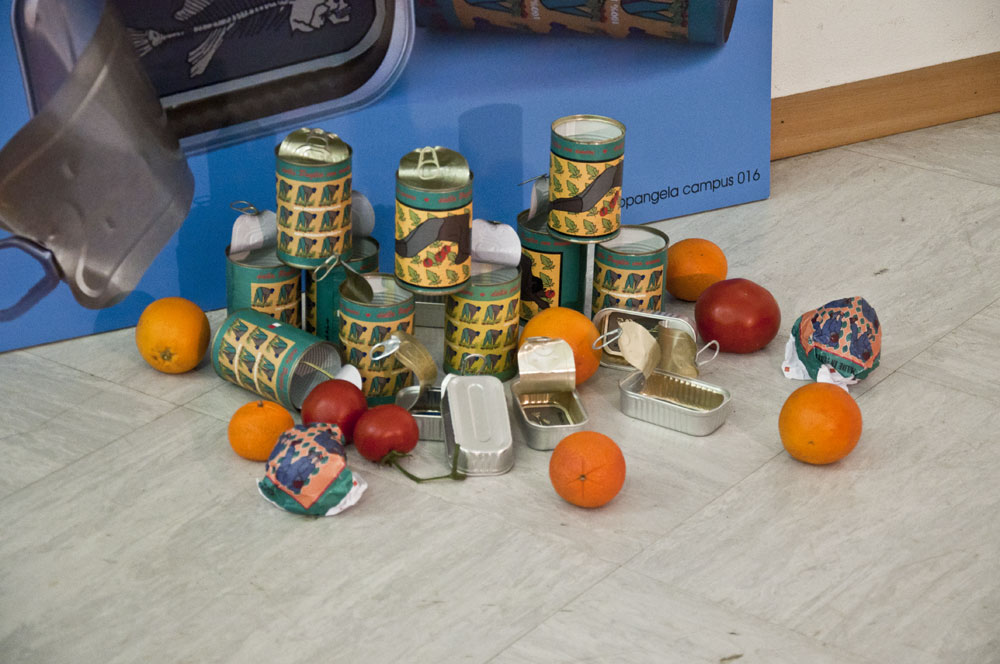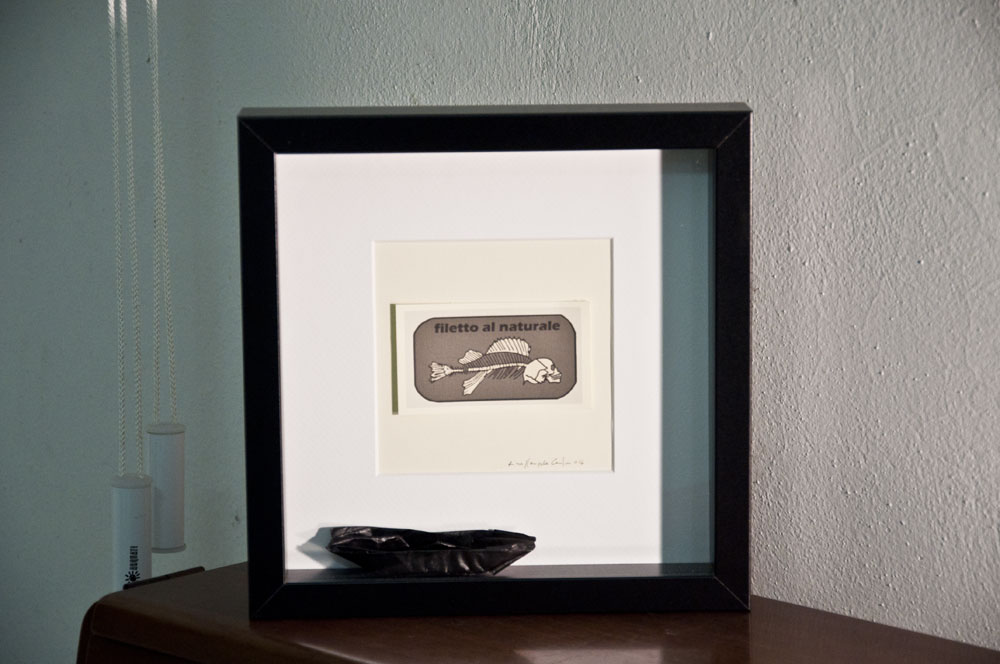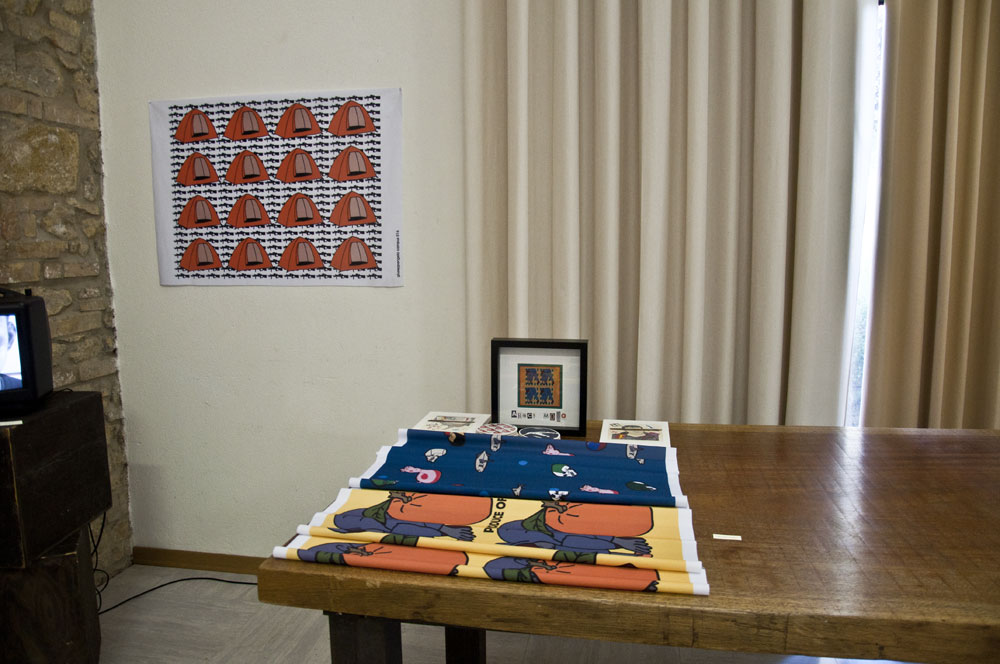
DIETROFRONT
installations/performance by G. Campus, M Onol, I Santini Del Prete, Luca Serasini e B. Sullo
May 14th – June 5th, 2016
Teatro di Nascosto – via Docciola 1, Volterra (PI)
A sincere thanks to Gianni Calastri, to Aral for the realization of the interviews and to Annet Henneman and the Teatro di Nascosto.
In cooperation with Ultima Frontiera, Teatro di Nascosto, Santa Chiara servizi alla persona and Accademia libera Natura e Cultura
[EN]
Migration is always a very difficult topic, with the fear of falling into sentimentality, now certainly also “fashionable” but which, willingly or unwillingly, we bring into our homes with the news and tragedies that are communicated to us daily, now too often even in a detached way, and, because of this everyday life, we are accustomed to it and therefore a little anesthetized. The artists who take part in this collective, with the different artistic languages that characterize them (painting, interactive light boxes, objects, performances and videos) creating a dynamic “environment” that wants to address, from the theme of travel to that of exploitation, the tragic condition of the migrant.
Giuseppangela Campus sets up a combinatorial game (with respect to normative communication and the rules that govern organizational communications) according to a system of values and forms dear to mass culture) to explore compositional solutions that are dissonant with respect to the images normally depicted. Studies for wrapping papers, pillows, labels for tomato jars, mackerel tins, etc. Heterogeneous and heterogeneous objects, trivial and an-aesthetic, are the things on which Campus intervenes to denounce the contradictions of our present; to talk about distant wars and mass atrocities, of desperate people in search of a better world and a dignified life.
The Turkish performer Murat Önol is interested in our perception of the migrant, our relationship with them, our-their-theirs. It does so by using and decomposing a poster of a cinematographic festival organized in Italy but dedicated to the Middle East which, however, seems to be an image that does not correspond to the reality of the situation.
Luca Serasini, with “the invisibles”, 5 postcards and 1 interactive light box halfway between photography and the play of shadows, interact with the visitor by making some silhouettes appear from a “banal” sea that would otherwise be just an empty mass of water and the migrants, as too often happens, invisible.
For the inauguration, Bruno Sullo presents the video “There, by the Sea” which is part of a triptych set on the relationships between inside and outside, of which he faces the aspect of the out, just as the previous “Here, in the Room” faced that of the in. In particular, the reflection on the “outside” focuses on the painful problem of migrants who endure the sea, deprivation and even death in an attempt to achieve a
dream, the most elementary dream of man, that of life and security. A dream whose referent is, in the first instance, Europe and which is not always achievable.
Still speaking of videos, we will see some short interviews in their mother tongue made to asylum seekers hosted by the reception center “Il Mondo è a Colori” managed by the ASP Santa Chiara of Volterra, where the use of their language to talk about their journey, their state of mind represents our distance, (unbridgeable perhaps?) and, as often happens, incomprehensible to our eyes.
We conclude with I Santini Del Prete who, for their part, have always worked with the language of performance, dialogue with the theme by putting “their face” on it, as always. They do so with a great deal of work on landing from the sea and the barriers and with a performance that is touching the
singing, irreverent, during the inauguration. From their words:
“From the sea. They come from the sea. They move with a story behind them, down there beyond infinity. They head towards the unknown painted with hope. They land leaving footprints on the water, on the battle, on the land. They are footprints that exude fear, horror, despair. Will the colors of the sky, the sea, nature be comforting?
They will find barriers, walls but also the solidarity inherent in human beings not yet devoured by blind selfishness, and those footprints will become monuments as a warning of a more tolerant future.”
[IT]
Un tema sempre molto difficile quello sulle migrazioni, con la paura di cadere nel sentimentalismo, ormai certo anche ”di moda” ma che, volenti o nolenti ci portiamo dentro casa con le notizie e le tragedie che quotidianamente ci vengono comunicate, ormai troppo spesso anche in maniera distaccata, e, per colpa di questa quotidianità, ne siamo assuefatti e quindi un poco anestetizzati. Gli artisti che prendono parte a questa collettiva vogliono dire la loro con i diversi linguaggi artistici che li caratterizzano (pittura, light box interattivi, oggetti, performance e video) creando un “ambiente” dinamico che vuole affrontare, dal tema del viaggio a quello dello sfruttamento, la condizione tragica del migrante. Giuseppangela Campus mette in scena un gioco combinatorio (rispetto alla comunicazione normativa e alle regole che presiedono le comunicazioni ordinate secondo un sistema di valori e forme care alla cultura di massa) per esplorare soluzioni compositive dissonanti rispetto all’immagini di norma raffigurate. Studi per carte da regalo, cuscini, etichette per barattoli di pomodoro, scatolette di sgombro, ecc. Oggetti eterocliti ed eterogenei, triviali ed an-estetici, sono le cose su cui la Campus interviene per denunciare le contraddizioni del nostro presente; per parlare di guerre lontane e atrocità di massa, di disperati alla ricerca di un mondo migliore e una vita dignitosa.
Al performer turco Murat Önol interessa la nostra percezione del migrante, il nostro rapporto con loro, la nostra-loro distanza. Lo fa utilizzando e decomponendo un manifesto di un festival cinematografico organizzato in Italia ma dedicato al Medio Oriente che sembra però essere una immagine non corrispondente alla realtà della situazione. Luca Serasini, con “gli invisibili”, 5 cartoline e 1 light box interattivo a metà tra la fotografia e il gioco delle ombre, interagiscono con il visitatore facendo comparire alcune sagome da un “banale” mare che altrimenti sarebbe solo una massa d’acqua vuota e i migranti, come troppo spesso accade, invisibili.
Per l’inaugurazione, Bruno Sullo presenta Il video “There, by the Sea” che fa parte di un trittico impostato sui rapporti tra dentro e fuori, di cui affronta l’aspetto dell’out, così come il precedente “Here, in the Room” affrontava quello dell’in. In particolare la riflessione sul “fuori” è incentrata sul problema doloroso dei migranti che subiscono il mare, le privazioni ed anche la morte per tentare di realizzare un sogno, il sogno più elementare dell’uomo, quello della vita e della sicurezza. Un sogno il cui referente è, in prima istanza, l’Europa e che non sempre risulta realizzabile.
Sempre parlando di video, vedremo “esposte” alcune brevi interviste in lingua madre fatte ai richiedenti asilo ospiti del centro di accoglienza “Il Mon- do è a Colori” gestito dalla ASP Santa Chiara di Volterra, dove l’utilizzo della loro lingua per parlare del loro viaggio, del loro stato d’animo rappresenta la nostra distanza, (incolmabile forse?) e, come spesso accade, poco comprensibile ai nostri occhi. Concludiamo con I Santini Del Prete che, dal canto loro, da sempre lavorando con il linguaggio della performance, dialogano col tema mettendoci, come sempre, “la faccia”. Lo fanno con un grande lavoro sull’approdo dal mare e le barriere e con una performance toccante, irriverente, durante l’inaugurazione. Dalle loro parole:
“Dal mare. Arrivano dal mare. Si muovono con una storia alle spalle, laggiù oltre l’infinito. Si dirigono verso l’igno- to dipinto di speranza. Approdano lasciando impronte sull’acqua, sulla battigia, sulla terra. Sono impronte che trasudano paura, orrore, disperazione. I colori del cielo, del mare, della natura saranno di conforto? Troveranno barriere, muri ma anche la solidarietà insita negli esseri umani non ancora divorati dal cieco egoismo, e quelle orme diventeranno monumenti a monito di un futuro più tollerante.”






